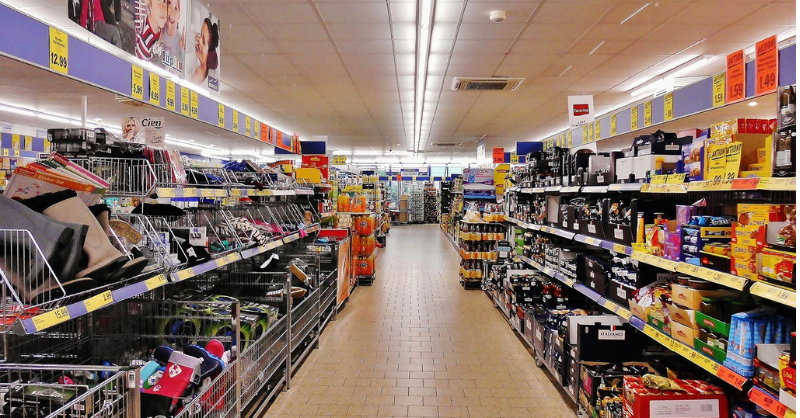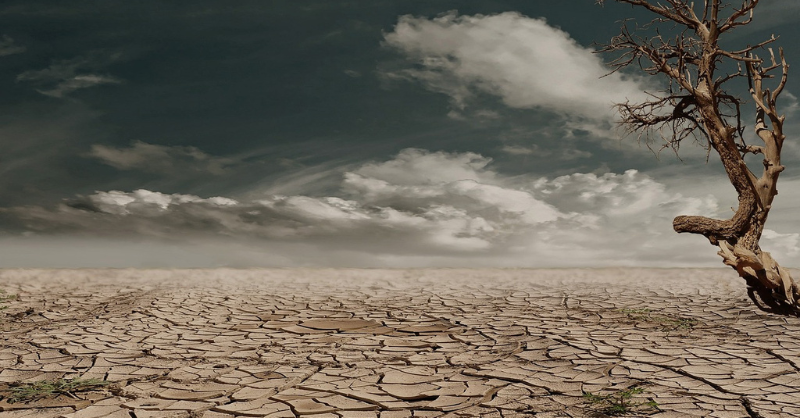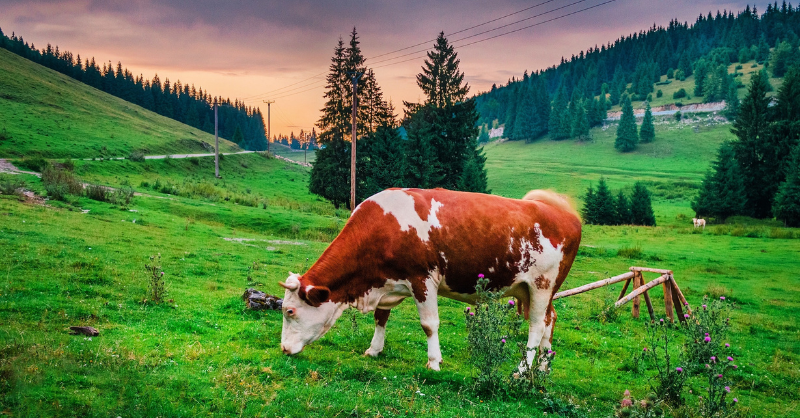
Biodiversity and food - solutions
The food industry has the potential to make a massive difference in terms of slowing and even reversing biodiversity loss.
The food industry has the potential to make a massive difference in terms of slowing and even reversing biodiversity loss. And many of the things they can do also can make good business and financial sense. Product reformulation is one of the less obvious, but potentially most powerful, routes.
What is the big theme?
For finance people, biodiversity can sometimes seem to be a problem to be solved by the “wider society”. One on which we act because of the risk of regulation or legal challenge. But, there are also very real financial reasons why acting now makes sense. The food industry has perhaps the greatest ability to drive change, through better supply chains and product reformulation. Not only can this protect future supply chains, but it can make near term financial sense as well.

The details
Summary of a release from the FDA
The U.S. Food and Drug Administration has announced draft recommendations for industry on the naming of plant-based foods that are marketed and sold as alternatives to milk. The draft guidance recommends that a plant-based milk alternative product that includes the term “milk” in its name, and that has a nutrient composition that is different from cow's milk, include a voluntary nutrient statement that conveys how the product compares with traditional milk.
Why this is important
According to the UN, agricultural expansion is said to account for 70% of the projected loss of terrestrial biodiversity. Agriculture directly impacts biodiversity loss through land use (loss of habitat), land degradation, and through the damage done by many farming practices including fertiliser and pesticide use, and water extraction. Now, to be clear, this is not a farmer bashing blog. I grew up in New Zealand, and I understand and appreciate the challenges that farmers face, and the pressures placed on them by the food producers and retailers.
So what can be done ? A recent Ellen MacArthur Foundation report highlights that most of the food that is eaten is processed, to varying degrees. This means that it is designed. There have been very intentional and deliberate decisions made that determine the foods flavour, texture, nutritional content, appearance and of course its cost. This process does not have one single perfect outcome. Different decisions made in the food design stage can result in the use of very different ingredients.
A good example of this is cow's milk vs plant based milk. Milk consumption globally is predominantly fresh milk (including fermented and pasteurised) except in high income countries, where it's more tilted toward processed products such as cheese and butter. By switching to plant based milk, where this makes nutritional sense, the food processing and food retail industries can make a material difference to both GHG emissions and biodiversity loss. How much of a difference …. a lot it turns out.
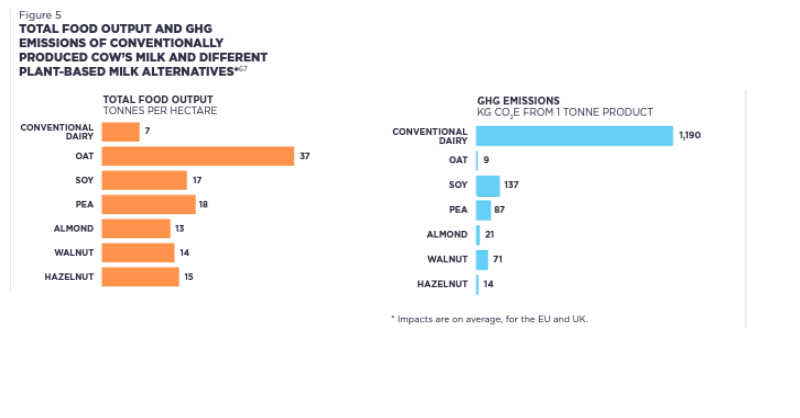
But it's not just about land use and GHG emissions. Water consumption is also important to biodiversity loss. For instance, a recent Cambridge University Press report highlighted that nuts, especially almonds, tend to be grown in water-scarce areas of the world and therefore increasing demand is causing depletion of water in already water-stressed areas. So, how do the various plant based alternatives measure up against cows milk? Actually very well.
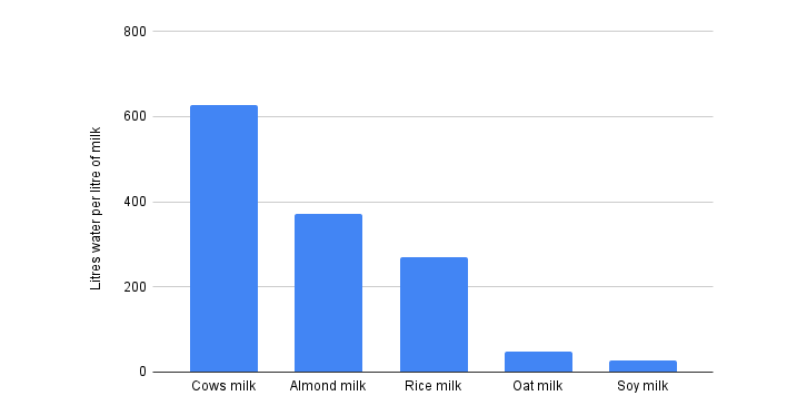
Just to be clear with this data, there are a wide range of estimates on water use, some (such as the Water Footprint Network) put the water requirement for cows milk at over 1,000 litres per litre of milk, but as this source points out, “the precise water footprint of milk in each specific case will depend on the place where and the production system in which the cow is raised, and on the composition and origin of the feed". We have taken the lower figures from the work by J Poore et al quoted above.
Something a little more bespoke?
Get in touch if there is a particular topic you would like us to write on. Just for you.
Contact us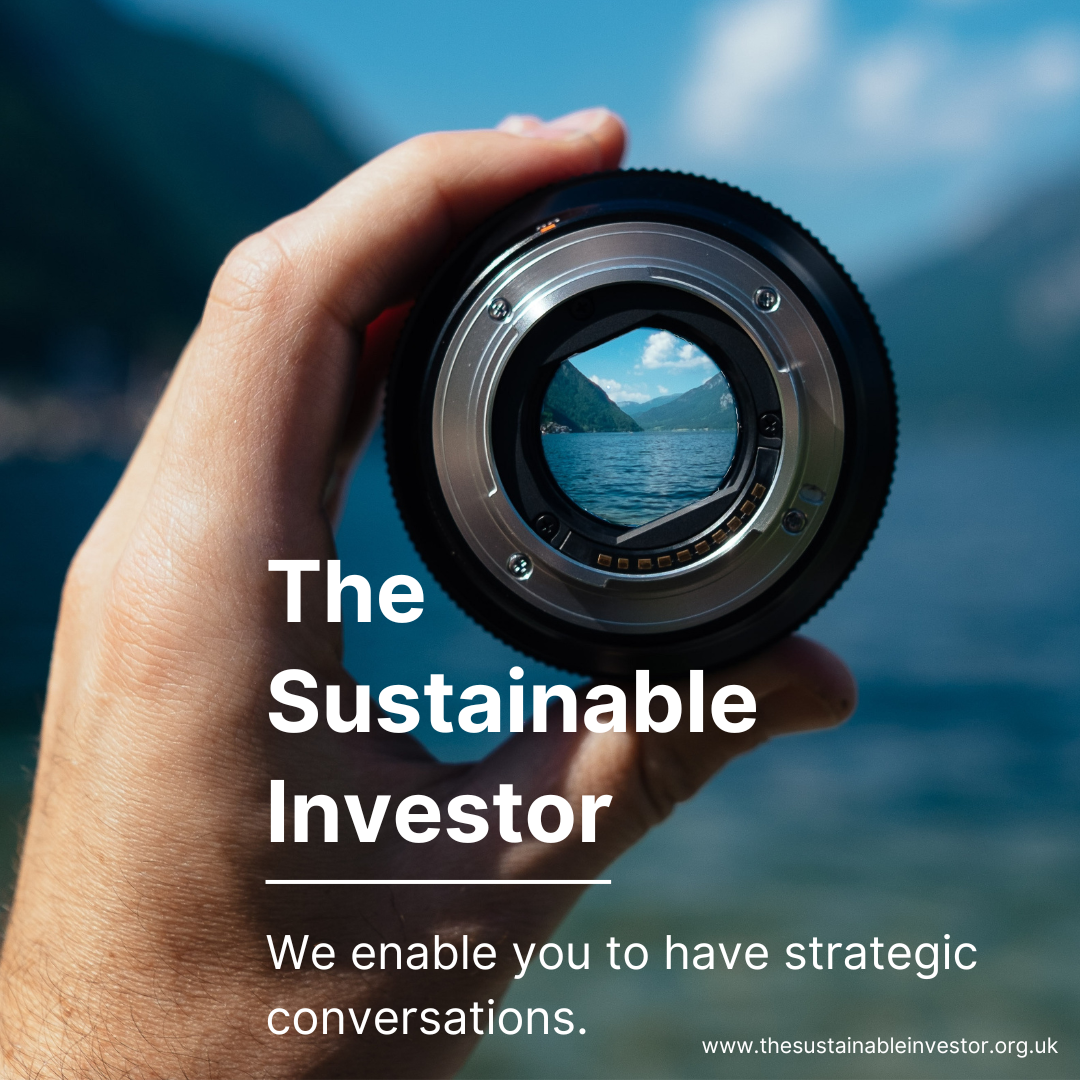
Please read: important legal stuff.
